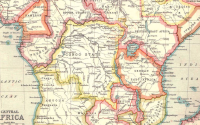06 March 2005
Scientists will tomorrow fly a spy plane high into the world's protective ozone layer, amid increasing fears that it may be about to develop a hole over Britain and northern Europe.
The old Russian Cold War plane will take off from near Munich in a EU-funded mission to check reports that the stratosphere over the northern hemisphere faces rapid ozone destruction over the next few weeks. If the hole developed, people living under it would be at increased risk of skin cancer and cataracts, the main cause of blindness.
The danger - which will also be assessed by scientists meeting in Zurich this week - has been provoked by the coldest winter on record about 12 miles above the Arctic, setting up ideal conditions for the destruction of the ozone layer. It is linked with global warming - as the atmosphere nearer the Earth warms, the stratosphere cools.
The ozone layer - a scattering of the blue-tinged gas through the 21-mile deep stratosphere which is so thin that if collected together it would form a girdle round the Earth no thicker than the sole of a shoe - screens out harmful ultraviolet radiation from the sun.
Without it, no terrestrial life would be possible. But, as it is weakened from being attacked by CFCs and other ozone-destroying pollutants, more radiation gets though to cause skin cancer and cataracts, damage crops and kill the plankton that are the basis of marine life.
For over 20 years, a hole as big as the US and as high as Mount Everest has opened up over Antarctica every southern spring. But, since the continent is almost entirely uninhabited, the hole has posed little danger to human health - though skin cancer rates in southern Chile, the only populated area under the hole, are three times as high as elsewhere.
For just as long, scientists have feared that a similar hole would open up over the Arctic, with serious implications for human health since it would be over densely populated areas in Britain, northern Europe, North America and Russia. So far, it has not formed largely because the Arctic does not get as cold as the Antarctic. But this year temperatures have been lower than at any time since records began and there are more special "polar stratospheric clouds" - essential to the process of ozone depletion - than at any time since pollution began threatening the ozone.
The EU says: "The concern is that the Arctic appears to be moving into Antarctic-like conditions, which will result in an increase in ultraviolet radiation levels that will have consequences on human health in northern hemisphere countries."
Dr Neil Harris of the European Ozone Research Co-ordinating Unit in Cambridge says ozone levels in the Arctic are 40 per cent lower than normal for this time of year. But scientists are divided on the likelihood of a hole developing. The crunch will come in the next few weeks, when sunlight - which plays a key role in destruction - returns after the dark Arctic winter.
If the hole does form, the risk to people will depend on weather conditions and other local factors, Dr Harris says. For example, clouds will shield people from radiation, while sunny days will expose them to it. But, even at its worst, the depletion is likely to be only half as severe as over Antarctica.
While the intensely cold "vortex" that forms the hole stays in the same place in Antarctica, in the northern hemisphere it wanders about. At the moment, it is over northern Europe, including Britain.
http://news.independent.co.uk/world/environment/story.jsp?story=617253






